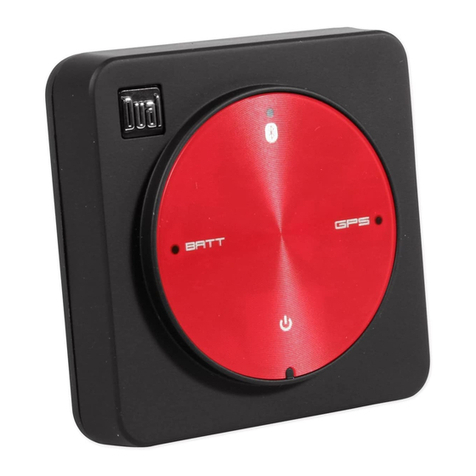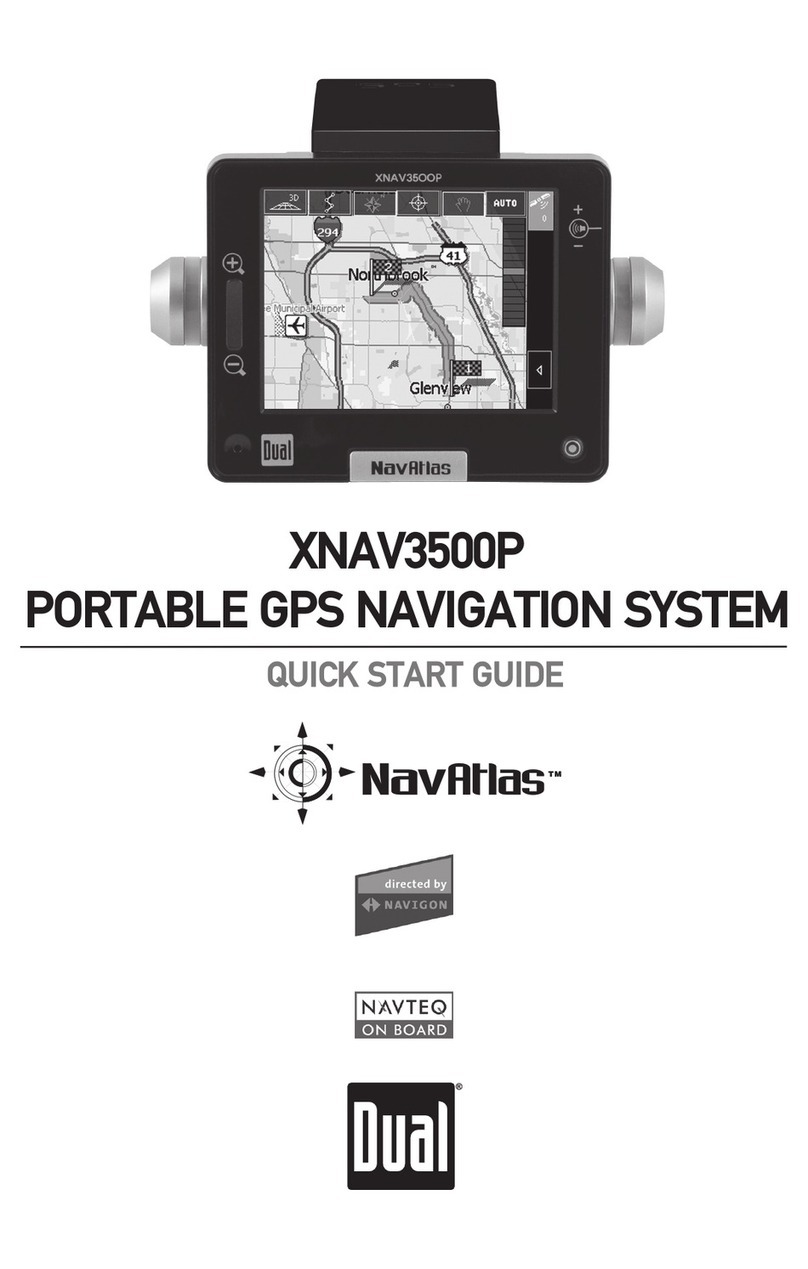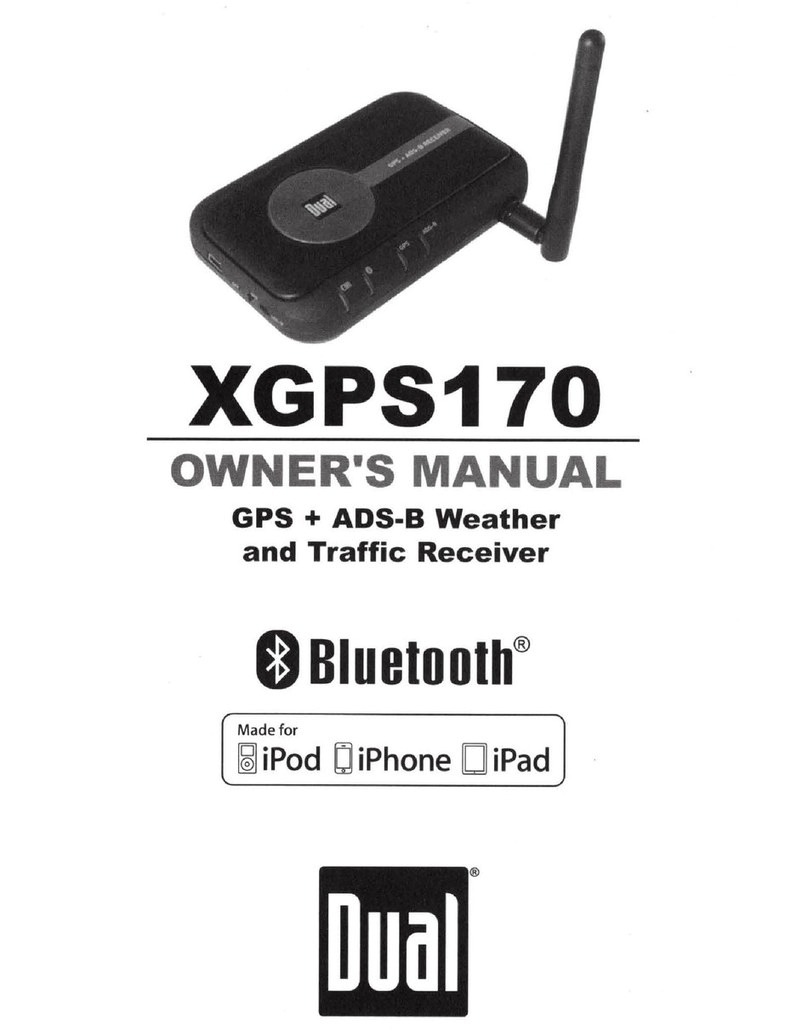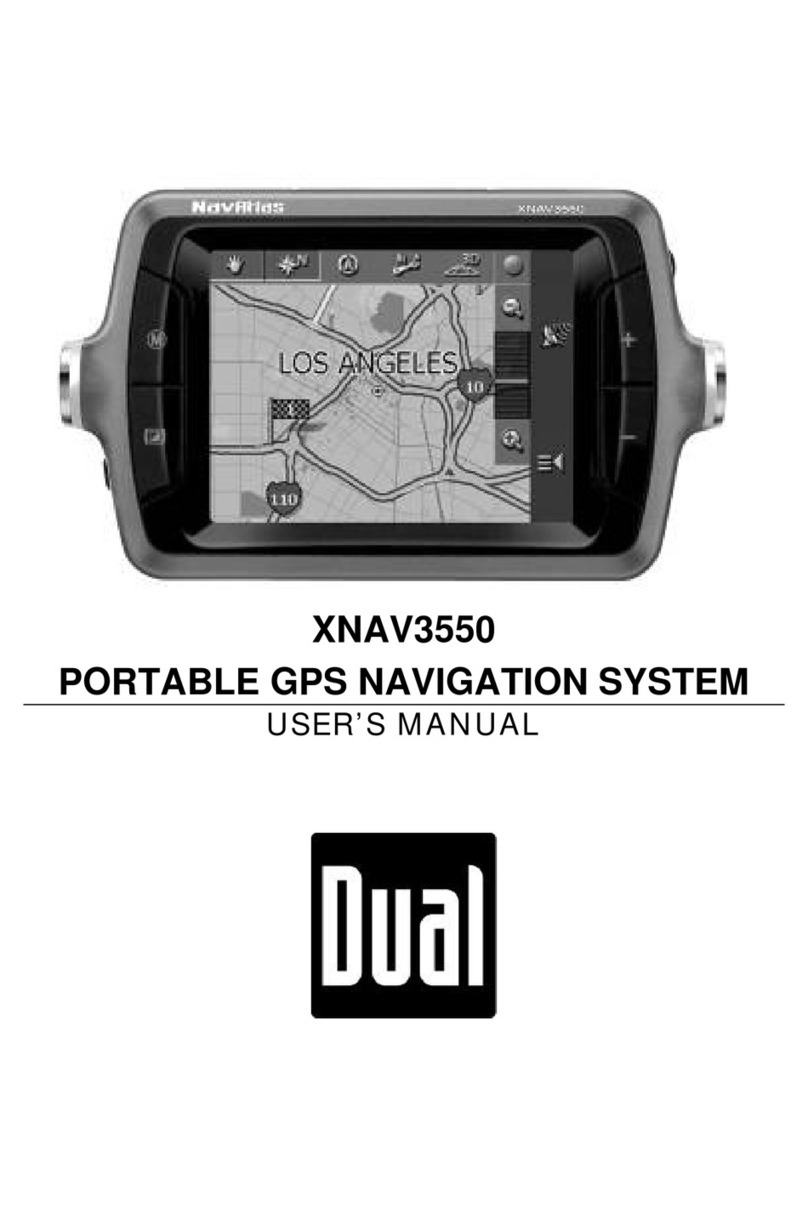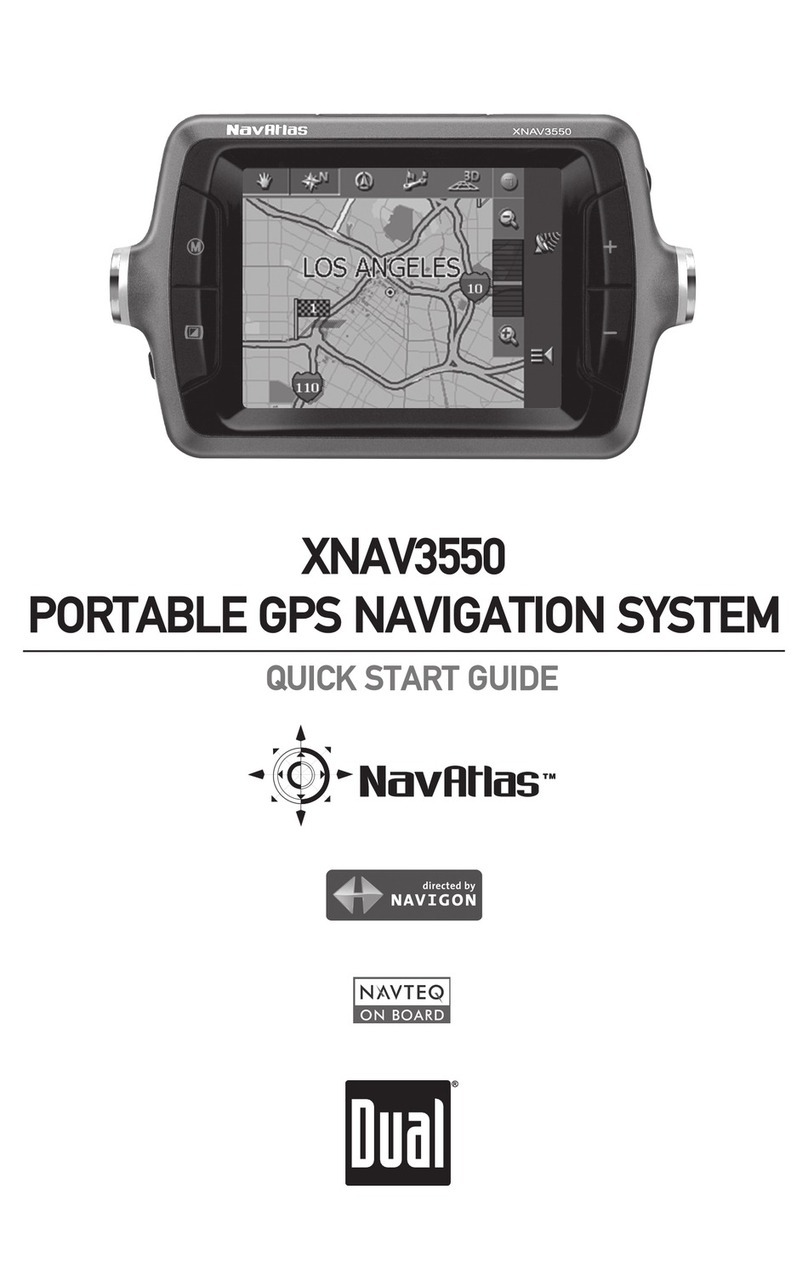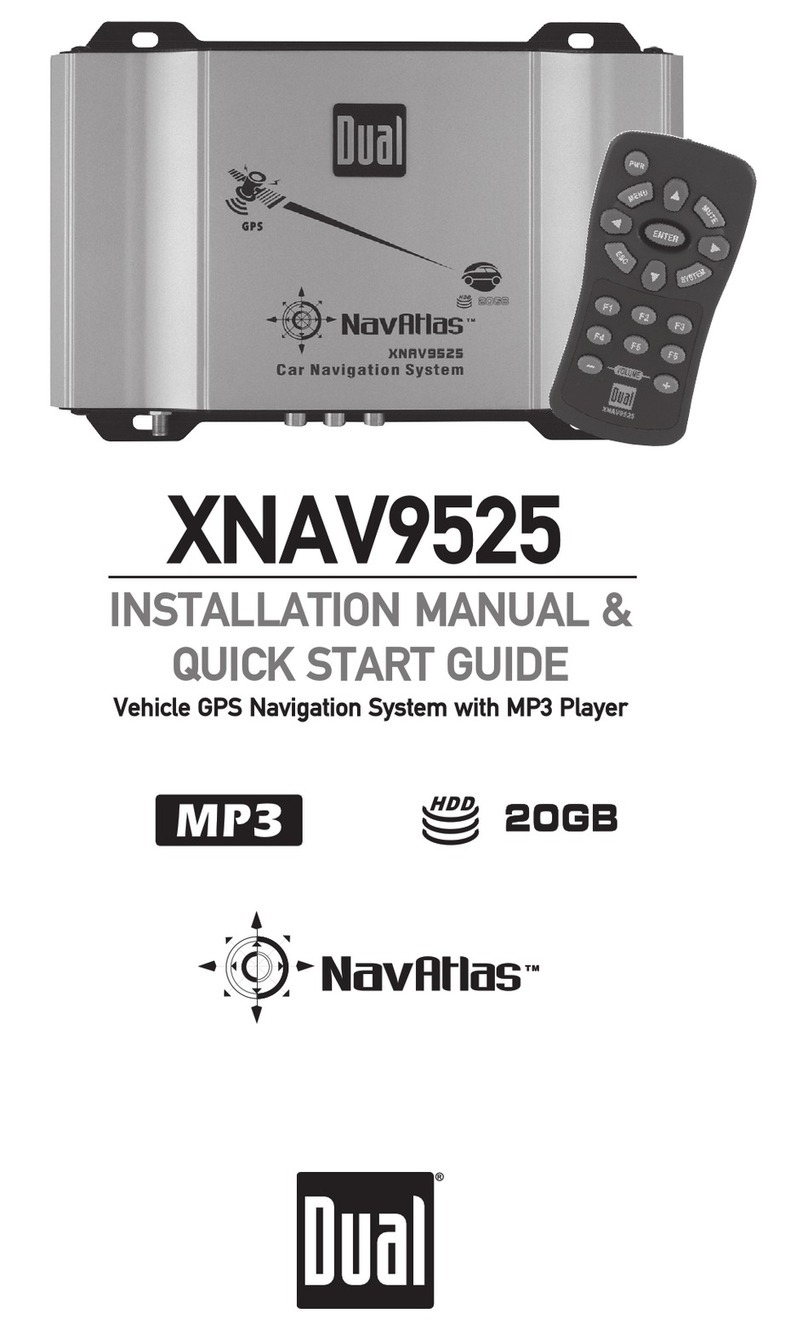
3
Introduction to your Navigation System
As you travel, your navigation system functions as your co-pilot, providing turn-by-turn visual and
voice assistance to direct you to your selected destination. Because the system knows where you are
and where you want to go, it can quickly calculate step-by-step directions that provide a route to any
destination available on the included navigation map. The map includes millions of roadway and
mapping destinations, and preprogrammed point of interest (POI) locations in several different
categories. Simply enter your desired destination into your navigation system, and its advanced
intelligence does the rest.
With your navigation system, if you deviate from the planned route, the navigation system will
automatically recalculate the route to determine a new one from your current location.
The navigation system uses Global Positioning System (GPS) satellites, and a digital roadway map
database to calculate and display travel directions. The system’s GPS antenna receives signals from a
constellation of 24 satellites orbiting the earth and uses the strongest of signals, to determine your
position to within meters. The navigation system’s sophisticated software provides the highly
accurate positioning necessary to provide real-time, accurate, turn-by-turn route guidance.
Vehicle Position
The navigation system’s computer considers vehicle speed and heading changes, together with
longitude and latitude information, to accurately determine vehicle heading and position on a digital
map. This information is relayed to you as you proceed to your selected destination through audible
suggestions, turn symbols, and the on screen map.
Signals from GPS satellites are used to determine the vehicle location. Three (good) or four (best)
satellites must be received to accurately determine location. The GPS reception status is indicated by
the GPS symbol on the map. See the GPS indicator section on page 14 for more information.
Map and Information Database
The map database used by your navigation system was created using high-resolution aerial and land
based data collection and is stored on a memory card. This data is enhanced with useful travel
information, such as freeway signage and approximately two million points of interest locations in
several different categories, such as tourist attractions, gas stations, airports, and restaurants. While
the database was judged to be as accurate as possible at the time of its release, a map database can
never be 100% accurate. Road information that is maintained in the map databases, such as turn
restrictions or road names may change over time. In addition, points of interests, such as restaurants,
hotels, and gas stations, also change over time. The complexity of keeping this directory current
means that some information may be missing or out-of-date at times.

